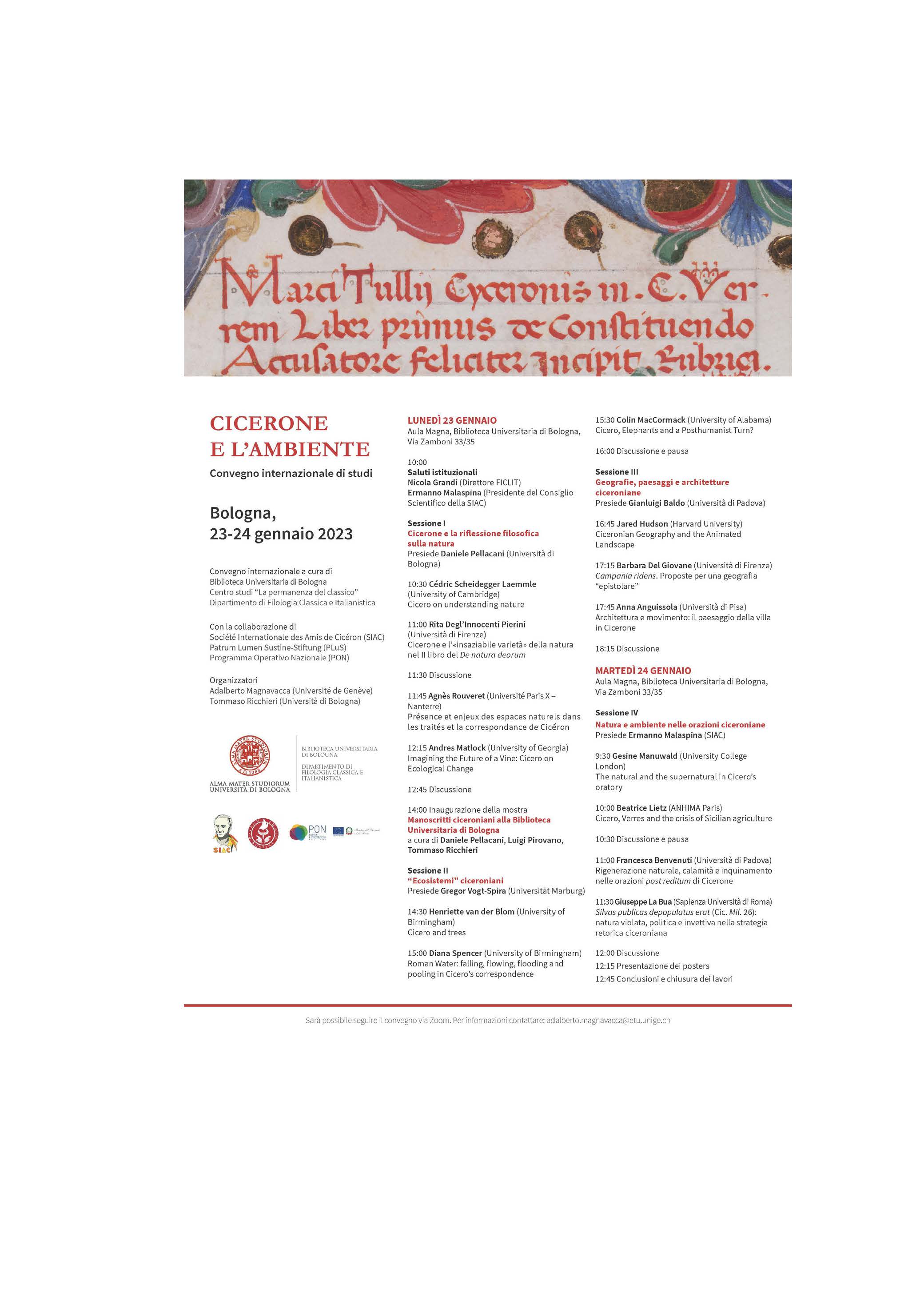The Role of the Natural World in Cicero’s De re publica and De legibus
DOI:
https://doi.org/10.13135/2532-5353/9343Abstract
The present paper argues that, in both De re publica and De legibus, Cicero employs descriptions and images of the natural world to support and supplement the philosophical arguments of the two treatises. These descriptions and images variously provide visible or tangible analogies to Cicero’s more theoretical arguments, as well as positive exempla drawn from the lives of successful political leaders of the past; in some cases, they appeal to readers’ emotional attachment to their ancestral homes, their families and all that they hold dear, to engender support for Cicero’s defence of the Roman res publica, on which all these things depended. Resort to such devices is all the more necessary because, despite the range of the arguments that are advanced in the two treatises in support of Cicero’s favoured political model, it is unlikely that Cicero’s readers would have found the treatises’ philosophical arguments entirely persuasive on their own. I conclude that the close relationship between the ways in which these devices are used and explained in the two treatises confirms that both treatises form part of a single project, in which Cicero employs both formal philosophical and political argument and a range of other literary and rhetorical devices.
Downloads
Downloads
Published
How to Cite
Issue
Section
License
Authors who publish with this journal agree to the following terms:
- Authors retain copyright and grant the journal right of first publication with the work simultaneously licensed under a Creative Commons Attribution License that allows others to share the work with an acknowledgement of the work's authorship and initial publication in this journal.
- Authors are able to enter into separate, additional contractual arrangements for the non-exclusive distribution of the journal's published version of the work (e.g., post it to an institutional repository or publish it in a book), with an acknowledgement of its initial publication in this journal.


 Ciceroniana On Line is recognised by ANVUR (the National Agency for the Evaluation of the University System and Research) as a CLASS A journal for the Sciences of Antiquity, Philology, Literature and History of Art (
Ciceroniana On Line is recognised by ANVUR (the National Agency for the Evaluation of the University System and Research) as a CLASS A journal for the Sciences of Antiquity, Philology, Literature and History of Art ( The journal is included in DOAJ. The DOAJ listing of the journals is available at
The journal is included in DOAJ. The DOAJ listing of the journals is available at  The journal is indexed in
The journal is indexed in  The journal has been included in ERIH PLUS. The ERIH PLUS listing of the journals is available at
The journal has been included in ERIH PLUS. The ERIH PLUS listing of the journals is available at 

